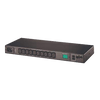How cabling your data center correctly can decrease cost, increase airflow, reduce energy consumption, and contribute to a highly available data center..
Created on: Apr 20, 2017
Cabling in data centers is a critical part of your overall infrastructure, without cables to connect each piece of equipment, your data center wouldn't be able to perform at all. However, have you considered just how big an affect cabling has on your data centers performance? In this article we'll explore best practices for data center cabling, and, how these best practices will improve your data centers energy consumption, cost, and availability.
Power Cabling
The are many options available to power your data center, choosing the correct PDU and Cable to attach your servers to the grid is paramount to ensuring a highly available architecture. Considering the following when choosing your power supply products.
- Use coloredpowercables to differentiate the primary power supply from the secondary or tertiary power supplies. This allows for fast, easy identification when a cord or PDU outlet fails.
- Use locking power cables to ensure a stable connection between your power supply inlet, the cord, and the PDU.
- Use SVT cordage instead of SJT cordage to further minimize excess volume and more tightly space server racks. (only available for 10A
- Use the thinnest Gauge wire suitable for your application. Thicker gauge wire will take up significantly more space in your cabinet than thinner gauge wire, and can have a huge impact on airflow inside the rack.
- Use the shortest length power cables possible to connect your PDU to your equipment. Many data center customers choose 3FT and 6FT, and 10FT cables for their infrastructure.
- Use labeled power cables to make replacing faulty cables fast, and to make duplicating a rack setup painless. If cables aren't labeled, you will often have to measure each cable's length to ensure you order the same lengths again.
- Choose colors for your colored power cables that are readily available in the marketplace, most shops carry RED, BLUE, and BLACK and the primary stocked colors, however YELLOW and GREEN are becoming more prevalent.
Color Power Cables
Colored power cables are used to identify primary and secondary circuits in data centers. Most data centers in production today have cabinets (racks) that are fed from two completely separate circuits. This means, that should one circuit go down, the entire rack will continue running with no interruption in service. This is paramount in high availability data centers. Colors power cables make identifying each circuit a snap, so, when an alert is generated in your DCIM software, system administrators can quickly find the faulty equipment.
Locking Power Cables
Locking cables help ensure that your cables do not become disconnected from the equipment or the PDU. Locking power cables come in many different varieties, and, it can be difficult to choose which ones are right for your infrastructure. For a full overview of locking power cables, see our IEC 60320 Locking Power Cords Reference Guide for more information.
- P-Lock Power Cables - P-Lock power cables allow you to lock your power cables onto the PDU, only if your PDU is a Raritan, ServerTech, or Vertiv PDU. The tabs on the outside of the plug lock into place on the outlet, ensuring it does not disconnect due to vibration. P-Lock cables DO NOT lock on the connector (equipment) end of the cable.
- V-Lock Power Cables - V-Lock Power cables allow you to lock your power cable to the PDU and the Equipment, only if your PDU is an 'APC 8000' series PDU, and, your equipment has a mating V-Lock inlet.
- A-Lock Power Cables - A -Lock power cables allow your power cables to securely lock onto the equipment you are powering to ensure it does not become disconnected. This can be critical in applications where there is significant vibration, or, the device may be moved frequently.

Author:
Brian Sackett
Marketing & Development
Related Products
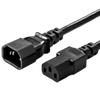
IEC 60320 Power Cords | Standard Data Center Power Cables
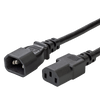
IEC 60320 C14 C13 Power Cords | Data Center Cords
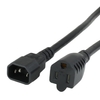
IEC 60320 C14 to NEMA 5-15R Adapter Power Cord | PDU Power Taps
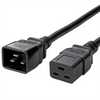
IEC 60320 C20 C19 Power Cords
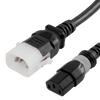
Locking Data Center Power Cables
